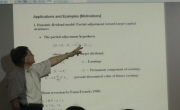한글초록 :본 연구는 단위발생을 유도한 돼지난자의 체외 배양 중 발생하는 수정난의 단편화 현상과 활성산소종에 의한 지질 과산화의 연관성을 조사하였다. 체외에서 성숙된 돼지난자를 ...
http://chineseinput.net/에서 pinyin(병음)방식으로 중국어를 변환할 수 있습니다.
변환된 중국어를 복사하여 사용하시면 됩니다.
- 中文 을 입력하시려면 zhongwen을 입력하시고 space를누르시면됩니다.
- 北京 을 입력하시려면 beijing을 입력하시고 space를 누르시면 됩니다.
The correlation between lipid peroxidation and procine Embryo fragmentation = 수정란의 단편화 현상과 지질 과산화에 대한 연구
한글로보기https://www.riss.kr/link?id=T10924134
- 저자
-
발행사항
서울 : 건국대학교, 2006
- 학위논문사항
-
발행연도
2006
-
작성언어
한국어
-
주제어
embryo ; fragmentation ; lipid ; porcine ; parthenotes ; H2O2 ; dbcAMP ; lazaroid ; blastomere ; in
-
DDC
660.6 판사항(22)
-
발행국(도시)
서울
-
형태사항
46 p. : 삽도 ; 26cm.
- 소장기관
-
0
상세조회 -
0
다운로드
부가정보
국문 초록 (Abstract)
한글초록 :본 연구는 단위발생을 유도한 돼지난자의 체외 배양 중 발생하는 수정난의 단편화 현상과 활성산소종에 의한 지질 과산화의 연관성을 조사하였다. 체외에서 성숙된 돼지난자를 전기자극(1.36 kV/cm 의 D.C pulse를 30 ㎲동안 실시)과 Cytochalasin B 처리를 4시간 동안 처리하여 단위발생을 유도하였다. 단위발생난은 NCSU23 배양액에서 48시간 배양 한 후 정상군과 단편화가 발생한 군 즉 비정상군으로 분리하여 배반포 단계까지 배양을 실시하였다. 본 실험에서 배반포단계의 총세포수와 핵의 단편화를 조사하기 위하여 Hoechst 33342 방법을 사용하였다. 먼저, 정상군과 단편화 현상을 나타내는 비정상군의 배양에서는 정상군이 비정상군에 비해 현저히 높은 (P<0.05) 발달률을 나타내었다. 또한, 항산화제가 수정난의 단편화 현상에 대해 어떠한 효과를 나타내는지 알아보기 위하여 글루타치온(0.25mM), 타우린(7mM), 시스테인(0.57mM)을 전 발달 단계에 처리하여 단편화율과 발달률을 조사하였다. 그 결과, 처리군이 대조군에 비해서 유의적으로 낮은 수정난의 단편화율과 높은 발달률을 나타냈다(P<0.05). 지질의 과산화 현상과 수정난의 단편화 현상의 관계를 알아보기 위한 실험에서 지질 과산화를 유도하는 과산화수소(H2O2)와 dbcAMP를 사용하여 시간경과에 따른 단편화 현상의 양상을 관찰하였다. 그 결과, 처리군이 대조군에 비해서 유의적으로 높은 단편화율 (P<0.05) 을 나타냄으로써 지질 과산화 현상이 수정난의 단편화를 증가 시킨다는 것을 알 수 있었다. 이러한 지질 과산화를 방지하기 위하여 강력한 항지질 산화제인 Lazaroid (U83836E)를 돼지 난자의 성숙과정과 배양과정에 처리한 결과, Lazaroid를 처리한 군이 대조군과 비교하여 낮은 단편화율과 높은 발달률 나타내었다. 또한, 배반포의 총세포수와 핵 단편화 조사에서도 대조군과 비교하여 높은 총세포수와 낮은 핵 단편화율을 보였다. 결론적으로, 전기자극에 의한 돼지 수정난의 배양중에 발생하는 높은 단편화율은 배양중에 발생하는 활성산소종에 의한 지질의 과산화와 관련 있으며 Lazaroid (U83836E)의 사용은 돼지 수정난의 지질 과산화를 감소시킴에 따라 단편화율 감소시키고 이는 발달률을 높이는 것으로 사료된다
국문 초록 (Abstract)
영문초록 :Pig oocytes contain high content of lipids and are highly susceptible to peroxidation by ROS. High ROS activity is a common feature of fragmentation and apoptosis. Therefore, this study examined the impact of lipid peroxidation on embryo...
영문초록 :Pig oocytes contain high content of lipids and are highly susceptible to peroxidation by ROS. High ROS activity is a common feature of fragmentation and apoptosis. Therefore, this study examined the impact of lipid peroxidation on embryonic development and blastomeric fragmentation. Results revealed that parthenogenetic embryos showed fragmentation rate of 57.3 ± 0.3%. These fragmented embryos showed significantly lower (P<0.05) blastocyst rate than non-fragmented embryos. Inclusion of antioxidants cysteine, taurine or glutathione during in vitro culture decreased the fragmentation rate significantly (P<0.05) and increased the blastocyst development rate of both non-fragmented and fragmented embryos. To establish the relationship of fragmentation with ROS and Lipid peroxidation, we added hydrogen peroxide (H2O2) or dibutryl cyclic AMP (dbcAMP) that are known inducers of ROS and fragmentation respectively. Results showed that addition of H2O2 but not dbcAMP to the maturation media reduced the maturation rate (18.6 ± 0.9, 89.6 ± 0.5 and 94.5 ± 1.9%), proportion of oocytes at MII stage (39.6 ± 0.7, 81.0 ± 1.0 and 83.9 ± 0.4%), and increased the fragmentation rate (48.7 ± 1.1, 34.2 ± 0.8 and 17.4 ± 0.5%). When tested in cell culture system, Lazaroid specifically reduced the oxidative stress coefficient induced by H2O2 as revealed by lipid perodixation specific C-11 BODIPY staining and spectroflouremetric quantification. Supplementation of Lazaroid, U83836E (10 μM) in maturation media decreased significantly (P<0.05) fragmentation rate (43.4 ± 1.6, 42.8 ± 1.0, 28.8 ± 0.5 and 42.1 ± 2.2%) and increased developmental ability (34.8 ± 0.6%). Furthermore, Supplementation of Lazaroid in in vitro culture medium, 10μM treatment group of Lazaroid (27.3 ± 0.4%) showed significantly lower (P<0.05) fragmentation rate than control (40.0 ± 0.7%). However, there is no significant difference on blastocyst rate among them. In cell number and nuclear fragmentation of these embryos showed that treatment of 10 μM Lazaroid is significantly higher (P<0.05) cell number and lower nuclear fragmentation rate than others. These data therefore suggest that reduction of lipid peroxidation by Lazaroid U83836E may decreases fragmentation rate and improve developmental competence of porcine parthenotes produced in vitro










